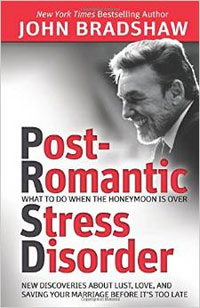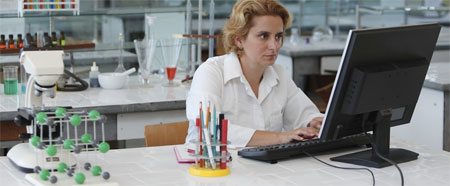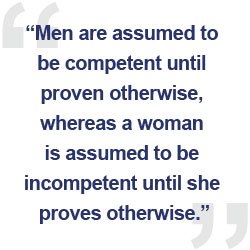 Communication is the key to maintaining a healthy relationship. Communicating with your significant other requires both listening and expressing your thoughts and desires.
Gary Chapmans’ book, The 5 Love Languages, suggests that there are 5 ways that we SHOW and RECEIVE love. His languages are: gifts, quality time, words of affirmation, acts of service, and physical touch. Chapman explains that it is important to learn the ways in which you like to show those that matter most that you love and appreciate them, as well as how you like to receive love from others.
Here are Gary Chapman’s 5 Love Languages:
Words of Affirmation
Hearing the words, “I Love You,” are important, but hearing the reasons on why someone loves you are just as important. Words of appreciation, encouraging works, and kind words are a powerful communication of love. Verbally communicating your love must be done with a humble heart, kindness, tenderness and sincerity.
Quality Time
Communication is the key to maintaining a healthy relationship. Communicating with your significant other requires both listening and expressing your thoughts and desires.
Gary Chapmans’ book, The 5 Love Languages, suggests that there are 5 ways that we SHOW and RECEIVE love. His languages are: gifts, quality time, words of affirmation, acts of service, and physical touch. Chapman explains that it is important to learn the ways in which you like to show those that matter most that you love and appreciate them, as well as how you like to receive love from others.
Here are Gary Chapman’s 5 Love Languages:
Words of Affirmation
Hearing the words, “I Love You,” are important, but hearing the reasons on why someone loves you are just as important. Words of appreciation, encouraging works, and kind words are a powerful communication of love. Verbally communicating your love must be done with a humble heart, kindness, tenderness and sincerity.
Quality Time Nothing says “I love you, like giving your beloved your undivided attention. A person who loves through quality time, or needs to be loved with quality time need that one on one time, with no TV, cell phone on vibrate, no outside influences, just one on one time. Quality time is not just being at the same place at the same time. It involved interaction and sharing the time together. Maintaining eye contact, no multi-tasking, and actively participating in the conversation are a must for the QT lover.
Gifting
Gifting should not be confused with materialism. Receiving gifts as a form of love focuses on the thoughtfulness and effort behind the gift, and vice versa for the gifter who shows love through gifting. The gifter is expressing that their sweetheart is cared for and prized for above whatever was sacrificed to bring the gift. The one showing their love through gift giving often goes through a great deal of thought and planning in an effort to provide the perfect gift at the most appropriate time.
Acts of Service
Showing love through acts of service display the devotion that one has towards their object of affection. Attempting to ease their workload and make their life easier bring pleasure to the acts of service lover. Actions such as housework, cooking meals, laundry, yard work, running errands, dealing with finances are just a few examples of acts of service one might perform to show their love and devotion. These acts, no matter how big or small, require thought, planning and effort. For the loved one who likes to receive love through acts of service, they see them as a display of love and commitment.
Physical Touch
Don’t confuse this love language as just related to sex. Physical touch can be hugs, pats on the back, hand holding, caressing as you pass each other, and kissing when you leave or return to the home. These small acts of affection build excitement and display loving and caring. Love touches don’t take much time and the holding hands, kissing, hugging, touching each other when you leave the house and when you return may involve only a brief kiss, but speaks volumes.
The Importance To Learn Your Love Language
If we use this model of showing and receiving love, it is important to have a healthy relationship to understand two things:
Nothing says “I love you, like giving your beloved your undivided attention. A person who loves through quality time, or needs to be loved with quality time need that one on one time, with no TV, cell phone on vibrate, no outside influences, just one on one time. Quality time is not just being at the same place at the same time. It involved interaction and sharing the time together. Maintaining eye contact, no multi-tasking, and actively participating in the conversation are a must for the QT lover.
Gifting
Gifting should not be confused with materialism. Receiving gifts as a form of love focuses on the thoughtfulness and effort behind the gift, and vice versa for the gifter who shows love through gifting. The gifter is expressing that their sweetheart is cared for and prized for above whatever was sacrificed to bring the gift. The one showing their love through gift giving often goes through a great deal of thought and planning in an effort to provide the perfect gift at the most appropriate time.
Acts of Service
Showing love through acts of service display the devotion that one has towards their object of affection. Attempting to ease their workload and make their life easier bring pleasure to the acts of service lover. Actions such as housework, cooking meals, laundry, yard work, running errands, dealing with finances are just a few examples of acts of service one might perform to show their love and devotion. These acts, no matter how big or small, require thought, planning and effort. For the loved one who likes to receive love through acts of service, they see them as a display of love and commitment.
Physical Touch
Don’t confuse this love language as just related to sex. Physical touch can be hugs, pats on the back, hand holding, caressing as you pass each other, and kissing when you leave or return to the home. These small acts of affection build excitement and display loving and caring. Love touches don’t take much time and the holding hands, kissing, hugging, touching each other when you leave the house and when you return may involve only a brief kiss, but speaks volumes.
The Importance To Learn Your Love Language
If we use this model of showing and receiving love, it is important to have a healthy relationship to understand two things:
- How you like to receive and show love
- How your significant other likes to receive and show love.
 In many relationships, the concept of love languages is foreign. Opening the lines of communication between you and your partner will allow you both to express your thoughts, observations and desires to each other without being criticized. The goal is to build a deeper and long lasting relationship while enjoying each other’s characteristics that you bring to the relationship.
Gary Chapman does offer an assessment: http://www.5lovelanguages.com/profile/couples/
This is a great tool that you and your partner can take and learn the best ways to communicate love and build a lasting relationship.
In many relationships, the concept of love languages is foreign. Opening the lines of communication between you and your partner will allow you both to express your thoughts, observations and desires to each other without being criticized. The goal is to build a deeper and long lasting relationship while enjoying each other’s characteristics that you bring to the relationship.
Gary Chapman does offer an assessment: http://www.5lovelanguages.com/profile/couples/
This is a great tool that you and your partner can take and learn the best ways to communicate love and build a lasting relationship.
 This past weekend also marked the much anticipated release of a movie based on the E.L. James bestseller, 50 Shades of Grey. 50 Shades of Grey is a erotic romance novel where a business exec who is into BDSM develops a relationship with a college student. The novel tells the story of their sexual romance in explicit detail showing the arousal achieved by pain, bondage, and other S&M practices.
This novel and movie portray intimacy and love mixed with untraditional practices that connect love with pain, control, power and submission.
Bestselling author and international speaker on relationships, Gary Thomas, sheds some light on the portrayal of love and intimacy in heterosexual relationships as depicted in 50 Shades of Grey. Here are some of the problems (paraphrased) he sees with “Grey”. Whether you’ve seen the movie or read the book, you can reflect on these comments to confirm your own ideas on love and sex and what you think is healthy and fulfilling in relationships.
This past weekend also marked the much anticipated release of a movie based on the E.L. James bestseller, 50 Shades of Grey. 50 Shades of Grey is a erotic romance novel where a business exec who is into BDSM develops a relationship with a college student. The novel tells the story of their sexual romance in explicit detail showing the arousal achieved by pain, bondage, and other S&M practices.
This novel and movie portray intimacy and love mixed with untraditional practices that connect love with pain, control, power and submission.
Bestselling author and international speaker on relationships, Gary Thomas, sheds some light on the portrayal of love and intimacy in heterosexual relationships as depicted in 50 Shades of Grey. Here are some of the problems (paraphrased) he sees with “Grey”. Whether you’ve seen the movie or read the book, you can reflect on these comments to confirm your own ideas on love and sex and what you think is healthy and fulfilling in relationships.
 What a classic and profound book! His focus is on new discoveries about lust, love and saving your marriage before it’s too late. Basically it’s about what to do when the honeymoon is over.
His premise is that too many people break up marriages that are worth saving. He is a strong supporter of IMAGO Relationship counseling and agrees that in marriage we are there to heal our partners childhood wounds. Also that the infatuation stage is supposed to decrease in intensity, and when that happens, most people don’t know how to keep the romance and spark in their relationship. He says that being in-love is spontaneous, yet achieving a fully adult kind of mature love is not. It takes effort. He also says that there are things we’d all like to change about our partners, but we must be willing to change our self first. What I really like is that he confirms what I often tell couples, “couples who find satisfaction together are those who are willing to compromise and allow their partners to have their differences”. You don’t have to think alike to have a good marriage, you have to respect the differences. He also talks about how important it is to have a solid sense of self when entering a relationship and why it is essential. He writes about how to overcome shame and argue effectively. I think this book is particularly good for anyone thinking about couples therapy, marriage therapy or relationship therapy. But also, for individuals who want to know essentials of what makes a healthy relationship work.
What a classic and profound book! His focus is on new discoveries about lust, love and saving your marriage before it’s too late. Basically it’s about what to do when the honeymoon is over.
His premise is that too many people break up marriages that are worth saving. He is a strong supporter of IMAGO Relationship counseling and agrees that in marriage we are there to heal our partners childhood wounds. Also that the infatuation stage is supposed to decrease in intensity, and when that happens, most people don’t know how to keep the romance and spark in their relationship. He says that being in-love is spontaneous, yet achieving a fully adult kind of mature love is not. It takes effort. He also says that there are things we’d all like to change about our partners, but we must be willing to change our self first. What I really like is that he confirms what I often tell couples, “couples who find satisfaction together are those who are willing to compromise and allow their partners to have their differences”. You don’t have to think alike to have a good marriage, you have to respect the differences. He also talks about how important it is to have a solid sense of self when entering a relationship and why it is essential. He writes about how to overcome shame and argue effectively. I think this book is particularly good for anyone thinking about couples therapy, marriage therapy or relationship therapy. But also, for individuals who want to know essentials of what makes a healthy relationship work.

 What happens when the opposite transformation takes place
What happens when the opposite transformation takes place I have always known that sugar triggers receptors similar to cocaine, heroine and other recreational drugs. Some clients in therapy tell me they are addicted to sugar. This informative and interesting article, validates how high amounts of sugar can be addictive and detrimental. I want to add that alcohol turns to sugar once absorbed in the blood system. Stay healthy for the holidays and keep in mind the effects of alcohol and sugar!
I have always known that sugar triggers receptors similar to cocaine, heroine and other recreational drugs. Some clients in therapy tell me they are addicted to sugar. This informative and interesting article, validates how high amounts of sugar can be addictive and detrimental. I want to add that alcohol turns to sugar once absorbed in the blood system. Stay healthy for the holidays and keep in mind the effects of alcohol and sugar! 
 most frequently for one or more of the following: better communication, more trust, more emotional intimacy or more sexual intimacy.
Often, one partner wants the other to have more empathy, compassion and a better understanding of their perspective. Sometimes people don’t feel safe asking for what they need or want in the relationship. Sometimes people ask for what they want but never seem to get it. Whatever the reason, couples often reach an impasse, unable to get the empathy and understanding they need from each other by themselves.
Statistics today identify the four predictors of divorce to be:
Criticism, Defensiveness, Withdrawal, and Contempt
By eliminating these adverse coping skills and replacing them with loving and effective skills and techniques, relationships improve. Trust, communication and a loving connection can be restored and re-established.
most frequently for one or more of the following: better communication, more trust, more emotional intimacy or more sexual intimacy.
Often, one partner wants the other to have more empathy, compassion and a better understanding of their perspective. Sometimes people don’t feel safe asking for what they need or want in the relationship. Sometimes people ask for what they want but never seem to get it. Whatever the reason, couples often reach an impasse, unable to get the empathy and understanding they need from each other by themselves.
Statistics today identify the four predictors of divorce to be:
Criticism, Defensiveness, Withdrawal, and Contempt
By eliminating these adverse coping skills and replacing them with loving and effective skills and techniques, relationships improve. Trust, communication and a loving connection can be restored and re-established.
 support and direction to help couples develop what they need to make a break-through rather than a break up. Most therapy is short term. I teach effective skills that you can use at home. The goal of therapy is to make changes so the couple will have
support and direction to help couples develop what they need to make a break-through rather than a break up. Most therapy is short term. I teach effective skills that you can use at home. The goal of therapy is to make changes so the couple will have  most frequently for one or more of the following: better communication, more trust, more emotional intimacy or more sexual intimacy.
Often, one partner wants the other to have more empathy, compassion and a better understanding of their perspective. Sometimes people don’t feel safe asking for what they need or want in the relationship. Sometimes people ask for what they want but never seem to get it. Whatever the reason, couples often reach an impasse, unable to get the empathy and understanding they need from each other by themselves.
Statistics today identify the four predictors of divorce to be:
Criticism, Defensiveness, Withdrawal, and Contempt
By eliminating these adverse coping skills and replacing them with loving and effective skills and techniques, relationships improve. Trust, communication and a loving connection can be restored and re-established.
most frequently for one or more of the following: better communication, more trust, more emotional intimacy or more sexual intimacy.
Often, one partner wants the other to have more empathy, compassion and a better understanding of their perspective. Sometimes people don’t feel safe asking for what they need or want in the relationship. Sometimes people ask for what they want but never seem to get it. Whatever the reason, couples often reach an impasse, unable to get the empathy and understanding they need from each other by themselves.
Statistics today identify the four predictors of divorce to be:
Criticism, Defensiveness, Withdrawal, and Contempt
By eliminating these adverse coping skills and replacing them with loving and effective skills and techniques, relationships improve. Trust, communication and a loving connection can be restored and re-established.
 support and direction to help couples develop what they need to make a break-through rather than a break up. Most therapy is short term. I teach effective skills that you can use at home. The goal of therapy is to make changes so the couple will have
support and direction to help couples develop what they need to make a break-through rather than a break up. Most therapy is short term. I teach effective skills that you can use at home. The goal of therapy is to make changes so the couple will have